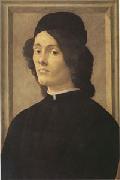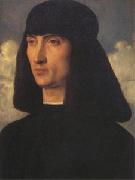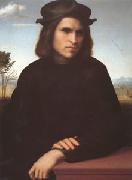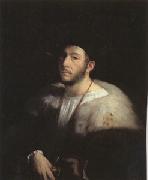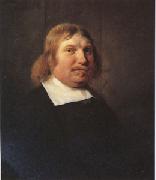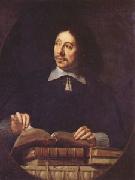Wholesale Oil Painting No Minimum |
|||||||||||
|
|
|||||||||||

|
|||||||||||
|
|
|
||||||||
Sandro BotticelliItalian Early Renaissance Painter, 1445-1510 Italian painter and draughtsman. In his lifetime he was one of the most esteemed painters in Italy, enjoying the patronage of the leading families of Florence, in particular the Medici and their banking clients. He was summoned to take part in the decoration of the Sistine Chapel in Rome, was highly commended by diplomatic agents to Ludovico Sforza in Milan and Isabella d Este in Mantua and also received enthusiastic praise from the famous mathematician Luca Pacioli and the humanist poet Ugolino Verino. By the time of his death, however, Botticelli s reputation was already waning. He was overshadowed first by the advent of what Vasari called the maniera devota, a new style by Perugino, Francesco Francia and the young Raphael, whose new and humanly affective sentiment, infused atmospheric effects and sweet colourism took Italy by storm; he was then eclipsed with the establishment immediately afterwards of the High Renaissance style, which Vasari called the modern manner, in the paintings of Michelangelo and the mature works of Raphael in the Vatican. From that time his name virtually disappeared until the reassessment of his reputation that gathered momentum in the 1890s |
||||||||
|
|
||||||||
Portrait of a Man (mk05)
Portrait of a Man (mk05) Painting ID:: 20034 |
Wood 22 1/2 x 15 1/4''(57 x 39 cm)Entered the Louvre in 1882 Wood 22 1/2 x 15 1/4''(57 x 39 cm)Entered the Louvre in 1882 |
|||||||
|
|
||||||||
Giovanni BelliniItalian High Renaissance Painter, ca.1430-1516 (b ?1431-6; d Venice, 29 Nov 1516). Painter and draughtsman, son of (1) Jacopo Bellini. Although the professional needs of his family background may have encouraged him to specialize at an early date in devotional painting, by the 1480s he had become a leading master in all types of painting practised in 15th-century Venice. Later, towards the end of his long life, he added the new genres of mythological painting and secular allegory to his repertory of subject-matter. His increasing dominance of Venetian art led to an enormous expansion of his workshop after c. 1490; and this provided the training-ground not only for his numerous shop-hands and imitators (generically known as Belliniani) but probably also for a number of major Venetian painters of the next generation. Throughout his career, Giovanni showed an extraordinary capacity for absorbing a wide range of artistic influences, both from within Venetian tradition and from outside. He also oversaw a technical revolution in the art of painting, involving the gradual abandonment of the traditional Italian use of egg tempera in favour of the technique of oil painting pioneered in the Netherlands. It was thanks to Giovanni Bellini that the Venetian school of painting was transformed during the later 15th century from one mainly of local significance to one with an international reputation. He thus set the stage for the triumphs of Venetian painting in the 16th century and for the central contribution that Venice was to make to the history of European art. |
||||||||
|
|
||||||||
|
|
Portrait of a Man (mk05)
Portrait of a Man (mk05) Painting ID:: 20076 |
Wood 13 x 10 1/4''(33 x 26 cm)Entered the Louvre in 1902 Wood 13 x 10 1/4''(33 x 26 cm)Entered the Louvre in 1902 |
||||||
|
|
||||||||
FRANCIABIGIOItalian High Renaissance Painter, 1484-1525 Italian painter. The son of a Milanese linen-weaver, he had completed his apprenticeship, in Florence, by 18 October 1504. His earliest documented works, for example a Piete (1506) for S Pancrazio, Florence, have not survived. According to Vasari, Franciabigio trained with Mariotto Albertinelli, in whose last work, the signed and dated Crucifixion (1506; Florence, Certosa del Galluzzo, Pin.), he painted the angels (Shearman). In December 1508 the names of Franciabigio and Andrea del Sarto, who sometime between autumn 1506 and 1509 set up a joint workshop, were entered in the registration book of the Arte de' Medici e Speziali, to which painters were required to belong. The Portrait of a Young Man (Paris, Louvre) dates from this period. The work, which was later enlarged, shows the subject half-length, leaning pensively against a balustrade, with strong areas of shadow around the eyes. This is the first in a series of male portraits typical of Franciabigio: the subjects, each of whom wears a hat, are mostly placed in front of a landscape, with their gaze fixed meditatively or piercingly on the onlooker. The religious works from this period, such as the Virgin and Child (1509; Rome, Pal. Barberini), also show a movement away from the style of Albertinelli and Raffaellino del Garbo and begin to reveal instead the influence of Leonardo, Michelangelo and, especially, Raphael. Yet Franciabigio's connection with Andrea del Sarto was the determining factor in his career. When in 1509 it was del Sarto who received the commission to complete the fresco cycle in the atrium of SS Annunziata, Florence, their relationship altered significantly. |
||||||||
|
|
||||||||
|
|
Portrait of a Man (mk05)
Portrait of a Man (mk05) Painting ID:: 20158 |
Wood,30 x 23 1/2''(76 x 60 cm).Acquired from the Duc de Richelieu by Louis XIV in 1665 Wood,30 x 23 1/2''(76 x 60 cm).Acquired from the Duc de Richelieu by Louis XIV in 1665 |
||||||
|
|
||||||||
Giovanni diactive 1310-1347 in Siena |
||||||||
|
|
||||||||
|
|
Portrait of a Man (mk05)
Portrait of a Man (mk05) Painting ID:: 20224 |
Canvas,37 1/2 x 30 1/4''(95 x 77 cm)Early collection Canvas,37 1/2 x 30 1/4''(95 x 77 cm)Early collection |
||||||
|
|
||||||||
Jan de Bray1627-1697 Dutch Painter, draughtsman and etcher, son of (1) Salomon de Bray. He spent virtually the whole of his career in Haarlem, except for the period 1686-8, when he lived in Amsterdam. After training with his father, Jan began working as a portrait painter in Haarlem in 1650, an activity he continued for the next 40 years. Between 1667 and 1684 he served on the committee for the Haarlem Guild of St Luke, whose leading members he portrayed in a picture dated 1675 (Amsterdam, Rijksmus.) that includes a self-portrait (Jan is seen standing and drawing on the left). He married three times, in 1668, 1670 and 1672. His first two wives died a year after their marriage, his third two years afterwards, and in each case the death was followed by disputes over the inheritance. Jan bankruptcy of 1689 may have been a result of one of the lawsuits. He was 62 at the time, and from then onwards he seems to have lost his artistic drive, crushed by the financial blow and the consequent loss of social position. |
||||||||
|
|
||||||||
|
|
Portrait of a Man (mk05)
Portrait of a Man (mk05) Painting ID:: 20394 |
1658
Wood,26 1/2 x 22''(67 x 56 cm).Received in 1910 1658 Wood,26 1/2 x 22''(67 x 56 cm).Received in 1910 |
||||||
|
|
||||||||
Philippe de Champaigne1602-1674 Philippe de Champaigne Locations His artistic style was varied: far from being limited to the realism traditionally associated with Flemish painters, it developed from late Mannerism to the powerful lyricism of the Baroque. It was influenced as much by Rubens as by Vouet, culminating in an aesthetic vision of the world and of humanity that was based on an analytic view of appearances and on psychological truth. He was perhaps the greatest portrait painter of 17th-century France. At the same time he was one of the principal instigators of the Classical tendency and a founder-member of the Acadmie Royale de Peinture et de Sculpture. His growing commitment to the Jansenist religious movement (see JANSENISM) and the severe plainness of the works that it inspired has led to his being sometimes considered to typify Jansenist thinking, with its iconoclastic impulse, in spite of the opposing evidence of his other paintings. He should be seen as an example of the successful integration of foreign elements into French culture and as the representative of the most intellectual current of French painting. |
||||||||
|
|
||||||||
|
|
Portrait of a Man (mk05)
Portrait of a Man (mk05) Painting ID:: 20620 |
Canvas 36 x 28 1/4''(91 x 72 cm)Acquired in 1806 Canvas 36 x 28 1/4''(91 x 72 cm)Acquired in 1806 |
||||||
|
|
||||||||
|
Philippe de Champaigne 1602-1674 Philippe de Champaigne Locations His artistic style was varied: far from being limited to the realism traditionally associated with Flemish painters, it developed from late Mannerism to the powerful lyricism of the Baroque. It was influenced as much by Rubens as by Vouet, culminating in an aesthetic vision of the world and of humanity that was based on an analytic view of appearances and on psychological truth. He was perhaps the greatest portrait painter of 17th-century France. At the same time he was one of the principal instigators of the Classical tendency and a founder-member of the Acadmie Royale de Peinture et de Sculpture. His growing commitment to the Jansenist religious movement (see JANSENISM) and the severe plainness of the works that it inspired has led to his being sometimes considered to typify Jansenist thinking, with its iconoclastic impulse, in spite of the opposing evidence of his other paintings. He should be seen as an example of the successful integration of foreign elements into French culture and as the representative of the most intellectual current of French painting. Portrait of a Man (mk05) Canvas 36 x 28 1/4''(91 x 72 cm)Acquired in 1806 |
||||||||
|
|
||||||||
|
Prev Next
|
||||||||
|
|
||||||||
|
Related Paintings to Philippe de Champaigne :. |
||||||||
|
|
||||||||
|
CONTACT US |
